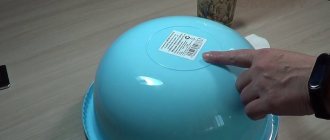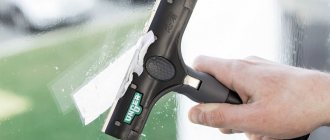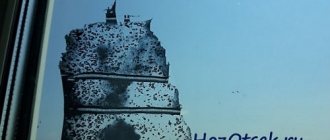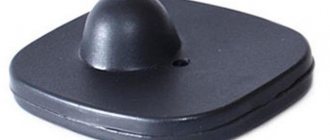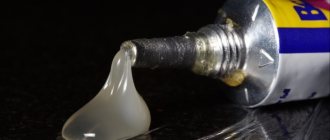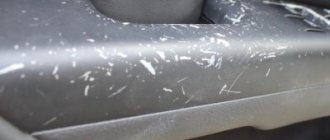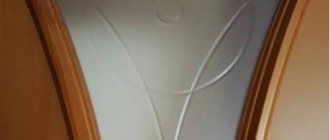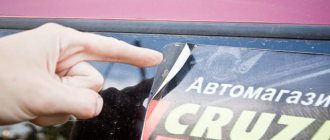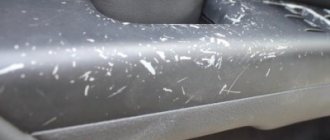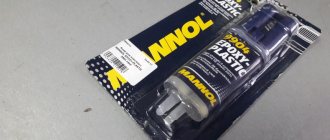Many things and goods, including books, household and electronic appliances, dishes, cars, have a manufacturer's label or barcode, and sometimes a price tag. Often these stickers are located in the most inappropriate places and spoil the appearance of the products.
However, removing the label is not so easy, since they are glued with high-strength adhesive. This is done so that the sticker does not fall off during transportation and transportation of the goods.
Typically, label removal is done mechanically, when the sticker is pryed with a fingernail or a sharp object and an attempt is made to pick it off. However, often the glued label is removed only in small pieces, leaving particles on the surface, despite the applied efforts.
In addition, after removal, unsightly marks from stickers, paper or glue remain on the products. And sharp objects can scratch things.
In this article we will look at how to peel off a sticker without leaving marks or harming things. The method of removal depends on the type and type of product. Some methods are used for plastic, others for books, and so on.
You cannot use products designed to clean one material on another, otherwise you will ruin the thing! Next, we will learn how to remove stickers from various products. And let's look at how to remove traces of glue and paper from the surface of objects.
How to remove stickers from glass and dishes
Essential oils, especially eucalyptus and tea tree oils, remove stickers and eliminate sticky residue from glass, tiles and ceramics. How to wash ceramic products, read the article about the rules for caring for ceramic tiles and porcelain stoneware.
Place a few drops of oil on a clean, dry cloth and wipe the dirty area. Then rinse the products with a composition for cleaning mirrors and glass, and finally wipe dry.
Vinegar and gasoline are only suitable for glass items. Apply a little of the selected product to a cotton pad, treat the surface and then remove the remaining label with a knife or other sharp object. Then wash the area with a damp cloth and wipe dry.
After the procedure, thoroughly wipe the surface with a solution for washing windows, glass and mirrors. Do not use brushes, rough or hard sponges to avoid scratching and damaging the glass. It is not recommended to use motor gasoline as it leaves streaks. Take a gasoline lighter.
For plastic utensils, you can use methods to clean plastic products. Essential oils are suitable for ceramic dishes; baking soda is suitable for porcelain and other types of materials.
In the latter case, a glass of soda is dissolved in a saucepan with hot water, where the product is lowered and left for half an hour. As a result, the label will fall off on its own. Remember that dishes with a label or sticker cannot be washed in the dishwasher!
Butter
The fat contained in the oil breaks down the remaining glue, helping to quickly clean glass or ceramic dishes. Apply a thick layer of the product to the stained area or label and leave for an hour. After this time, the sticker should peel off easily from the surface without leaving marks.
How to make glue more liquid and pliable? Of course, warm it up. Turn on the hairdryer to the highest temperature, press it to the surface and hold for 30 seconds. Glue with label residues can be easily washed off the surface. If necessary, the procedure can be repeated again.
Five ways to remove a label from a book
- Take the tape, stick it to the label and carefully tear it off. Repeat the procedure with new tape until the sticker comes off completely;
- Iron the book through a thick fabric or warm it with hot air from a hairdryer. After this treatment, the adhesive composition will melt, and the base can be easily removed with a soft brush or cloth. You can also hold the book over boiling water;
- For a glossy cover, use alcohol, acetone or white alcohol. The solvent is applied to a cotton pad and the sticker is removed from the surface;
- Rub flour, starch, baby powder, laundry detergent or other non-abrasive dry crumbly product into the remaining glue;
- The remains of the label with a matte cover are removed with a school eraser.
Batik
Batik is painting clothes with acrylic paints. Such a pattern can be drawn only in the first minutes after application. Batik does not come off the fabric. If the thing is damaged or tired of you, then it is better to say goodbye to it.
There are no hopeless situations; there are many ways to update clothes. Choose the step-by-step method you like, experiment and enjoy things that can serve you for some time. If any method is not clear, use the help in photo and video format.
How to clean plastic from stickers
If you decide to scrape off the paper with a knife, blade or other sharp object, a weak solution of a chemical will remove the remaining paper. First, rub the label with a knife, and then apply the product.
By the way, today in stationery and bookstores you can find a special sticker trace cleaner. However, there are more affordable cleaning methods using improvised means.
A hairdryer will help you quickly and effectively remove stickers from plastic. Carefully pry up the corner of the label with a sharp object and use the hot air of a hair dryer to warm the sticker for a minute. Then remove the stroke and wipe the surface with a damp cloth or cloth. Instead of a hairdryer, you can use boiling water or steam, but be careful not to melt the plastic!
Vegetable oil is an affordable remover of stickers and adhesive traces from plastic products. Take sunflower, olive or rapeseed oil, apply to the desired surface and leave for at least a day.
In this case, it is advisable to saturate the plastic with oil every hour to simplify and speed up the process. After waiting time, remove the remaining glued paper with a damp cloth.
Easier ways are to use a school eraser or wet disinfectant wipes. The disinfectant composition will destroy the adhesive base in a few minutes and help get rid of the label.
To speed up the process, sprinkle the problem area with salt and then wipe with a napkin. An eraser will also remove the glued paper, and the remaining labels are removed with a light cloth soaked in a soapy solution.
Professional products
Modern preparations sold in retail outlets will help you get rid of traces of glue quickly and without consequences. The most popular of them:
- Scotch Remover. Removing traces of tape and labels is the main purpose of this product. It contains active citrus oils, which help dissolve stains from stickers, tar, resin and self-adhesive films.
- Liqui Moly. A universal sticker cleaner will help you completely remove marks from glass, metal and resistant plastic. Consists of natural ingredients.
- ASTROhim. The product contains a complex of special additives that penetrates deep into the dirt, after which it softens and partially breaks down. Quickly removes stubborn adhesive stains and traces of bitumen, while being safe for the surface being treated.
- Profoam 2000. Broad spectrum cleaner. Suitable for processing any coating, odorless, removes traces of glue, labels, markers, oil and many other contaminants.
- Fine Glass. The main purpose is glass cleaning. In addition, the mixture completely washes away adhesive traces on dishes, ceramic surfaces, metal and most types of plastic.
How to remove an old label and remove traces of glue from plastic
If the label has remained on the plastic for a long time, easy methods will not help. In this case, you need to use more concentrated products. White spirit works great. Mix the solvent with water.
Use only a weak solution to avoid damaging the plastic coating. Soak a cotton pad in the resulting mixture and soak the adhesive base. Wait ten minutes and wipe the product with a damp cloth or napkin.
The special product WD 40 will help to effectively remove stickers from plastic products. This composition quickly penetrates and loosens the adhesive composition, disinfects and cleans. Typically, WD 40 is used to lubricate locks and various mechanisms, as well as to remove rust.
By the way, read how to remove rust at home here. However, the product is also suitable for removing labels from plastic.
WD 40 aerosol is sprayed at a distance of ten centimeters from the surface of plastic products and left for ten minutes, then remove the residue with a damp cloth.
Instead of this composition, you can use alcohol, acetone or nail polish remover. Apply the solution to a cotton pad and wipe the pasted label, remove the residue with a blade or other sharp object, then wipe the product with a dry cloth.
After you remove the stickers, traces of glue may remain on the surface. This not only spoils the appearance of the product, but also contributes to the darkening of this area. In addition, dust and dirt will quickly stick to the sticky area. Peanut butter can remove traces of glue. Apply a little product on the sticky area, wait two to three minutes and then wash off with soap and water.
Masking or regular tape will 100% cope with sticker marks. Place the tape with the sticky side on the problem area and tear it off sharply. Then some of the glue will stick to the tape. Repeat the procedure with a new piece of tape until the remaining glue is completely removed.
If you don't have masking tape or peanut butter on hand, use regular baking soda. However, be careful, otherwise the concentrated solution will scratch the plastic. To avoid this, dilute the baking soda well with warm water. Apply the resulting paste to the sticky area and leave for five minutes. Then wash the plastic items with a soft cloth and warm water.
Rules for removing adhesive stains
It is advisable to remove the glue from the sticker immediately. There is no need to wait until dust gets on the layer: this will make it more difficult to deal with the sticky mass. If traces of glue have become dirty, hardened, and removing the stain is no longer so easy, you can use several methods to be more effective. The main thing is to monitor the condition of the surface so as not to spoil the item.
To remove label residues, chemicals are often used that can damage the coating. Aggressive substances easily damage plastic, varnish and paint. First, test the products on an inconspicuous area of the item. When working with chemicals, be sure to protect your hands, face, eyes and respiratory tract to avoid poisoning. Use toxic substances - gasoline, solvent - in ventilated areas.
On a note! Cover the surface around the sticky layer with masking tape, and during the processing you will not stain clean areas.
Take safety precautions when using electrical tools to remove the sticker. Also be careful when removing label adhesive from household appliances. Turn off the appliances being cleaned to avoid electric shock.
How to peel off a sticker from a soft surface
Sometimes we can find stickers on clothes, upholstered furniture, cars and household appliances. To remove a label or iron-on adhesive from clothing, place the item on a hard surface and wrap it in a towel. Then heat the sticker with a hot air dryer for five minutes, take a knife and peel off the sticker. Use a stiff brush to remove any remaining glue from the fabric and wash the item.
To remove stickers from upholstered furniture, use vegetable oil, apply it to a cotton pad and carefully lubricate the desired area. The product is left for ten minutes and then the label is removed with a plastic knife. The remaining oil is washed off with soapy water and the furniture is wiped with a dry cloth.
Solvents suitable for fabrics, upholstered furniture and clothing, curtains and drapes, tablecloths and other textiles include white spirit, nail polish remover and acetone or refined gasoline (used in lighters). These products degrease the surface, making it easy to wash off traces of glue or tape.
After cleaning, the furniture should be cleaned with a damp cloth with soapy water or a special product for cleaning furniture upholstery. And things must be washed. Read how to wash and iron curtains made of different materials here.
Silkscreen printing
If the clothing has a convex and dense print, it means it was made using silk-screen printing. The question of how to remove a design from a T-shirt of this format is very relevant, since this is quite difficult to do.
You can buy a spray to remove paint, apply it to the ornament and wash the item after 15 minutes. Even this method does not provide a guarantee, so it is better to make a patch or print over the design if you are tired of the previous image or have become damaged.
Stickers on cars and household appliances
To remove traces of labels or tape from a car, use special car cleaners. Alternatively, you can warm up the machine panel with a hairdryer and carefully scrape off the label.
By the way, at gas stations, stickers are removed using a hair dryer. Another option is to use steam or boiling water to heat the problem area of the metal, after which the adhesive composition will melt and it will be easy to remove marks.
Traces of adhesive tape on a refrigerator, stove, washing machine, microwave or other household appliances can be removed using vegetable oil, a hair dryer, a school eraser or special cleaning products. By the way, you can stick another one on top of the tape and tear it off sharply. Then the old tape will come off along with the old one.
To clean household appliances, use methods for plastic products, since plastic is mainly used in the manufacture of these items. A regular soap solution is perfect for washing.
For more information on how to clean and renew plastic, return the original color to plastic products and eliminate yellowness, see the link.
